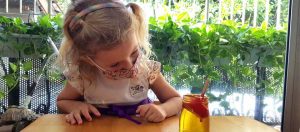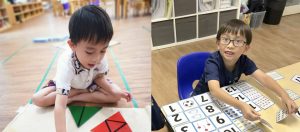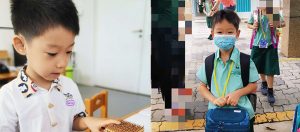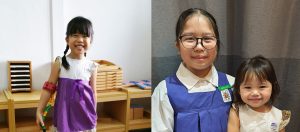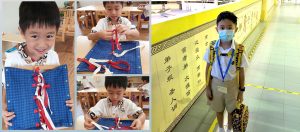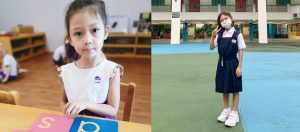
A Day in the Life: Keia
Hi everybody, my name is Keia and I am almost 4 years old! I am in the Shiny Starfish class at House on the Hill with Ms Gim Peng and Ms Shermaine. Today, I’m going to show you what a day in my life is like! 6.00am Good Morning! I usually wake up with my siblings, Luke, Leia and Mia, as we share the same bedroom. Sometimes, Mummy wakes me if we have to leave early for school. Today, I brushed my teeth and joined my siblings at the breakfast table. 6.25am Breakfast I like to have breakfast with my siblings. We usually have toast, cereal and fruits for breakfast, strawberries and eggs are my favourite! But sometimes, auntie will prepare roti prata or noodles for us! *Mummy says oats will make me taller but I prefer roti prata. Haha. * 6.35am Bye! See you later! Kor Kor and Jie Jies leave for school. Papa sends them to their school which is nearby while I continue breakfast with mummy. Big hugs to Leia and Mia!! “Bye!!!! See you later!!” Today, I had to take an ART test. I stayed very still while Mummy helped to swab my nose. I helped Mummy to squeeze 3 drops of liquid into the test kit and waited for the result. “Yay, a negative result!” 7.00am Getting ready for school Time for a shower before putting on my uniform. I can do this all by myself! I remembered to brush my hair too! Ms Gim Peng taught me to comb my hair from roots to bottom in school. 7.20am Off we go! Time to leave home for House on the Hill! Papa helps to buckle me into the car seat and off we go! Papa drove us to school today before he went to work. Usually Mummy will drive us to school. We love to sing on our way to school! 7.35am Coffee Stop We stop by a coffeeshop near school to get coffee for mummy and her colleagues. I help mummy with her tumblers. I love watching the uncle prepare mummy’s coffee! Our hands are busy carrying things so we can’t take pictures, sorry! 7.45am Checking in at school Hello! We’re here! Today, Ms Aishah checked my temperature and I sanitised my hands, then Ms Casilda checked me in. I love arriving at school early. I get to chat with Ms Gim Peng and other teachers, plus my other friends who are early. We also get a chance to feed our school terrapin pets, Moana, Lilo, and Stitch. Enjoy your breakfast! 8.45am Playground Time My favourite time of the day! I love to run down the slope and play a game of pirates with my friends. Hot Lava is my other favourite game to play! 9am Montessori Work Time It’s time to work. Today I am writing words that I can blend. I’d been practising hard to use the LMA (Large Moveable Alphabet) to learn to build words previously. Today, Ms Gim Peng says I’ve learnt to blend and put the sounds together very well to read the 3-letter phonic words. I can transfer them down to my writing exercise book! After I completed this task, my friend and I worked on an activity together. We were figuring out how to form a story game by putting pictures together in sequence. We are learning about what happens to our food after we eat them during our thematic day (Digestion System)! Did you know that we must always chew our food into smaller pieces? For Mathematics, Ms Gim Peng introduced addition to me using the short bead stairs. I can add numbers using the beads, just like my sisters! After this, I worked with another friend on the coloured blocks. We are always able to use these to come up with creative ways to form different patterns. Today, we explored the different ways to hide the smaller blocks in the bigger cube! After this, I worked with another friend on the coloured blocks. We are always able to use these to come up with creative ways to form different patterns. Today, we explored the different ways to hide the smaller blocks in the bigger cube! 11.30am Lunch Time! I eat lunch with a small group of friends. When the food arrives, we take turns to take our bowls and serve ourselves. My favourite lunch at school is the chicken and potato with lots of cheese (my teacher calls it the Potato Chicken Pizza Slices) and the fish which I eat with bread (Mummy says this is Mediterranean Style Salmon). Mummy likes that there’s no added salt and sugar in the food, I don’t know what that means, it all tastes good to me! 12.15pm Clean up time After lunch, we take turns to wash up and change out of our uniform. I have to pack away my used clothes. 12.45pm Mandarin Class We eagerly wait for Laoshi to arrive for our Mandarin programme. Today I’m learning the words for different clothing items. So that’s the word for slippers! I’m going to practice saying these words at home. My favourite part of Mandarin class are Laoshi’s games. They are so much fun! 3pm Snack Time I always like to have my afternoon snack at school before Mummy picks me up. My favourite day is yoghurt day – that’s when I get to pick my own fruits to have with my yoghurt! I like trying lots of new fruit. Yum! 3.30pm Time to go home! It’s time to go home. I pack my bag up and make sure all my things are inside. I go to my shoe cubby and put my shoes on, then I head downstairs. There’s Mummy! I give her a hug and then we head home. See you tomorrow House on the Hill! 4.00pm Exploring with Leia and Mia My brother and sisters are home when we get back. Now it’s playtime with Leia, Mia and our cousin! We get our backpacks and wagon


